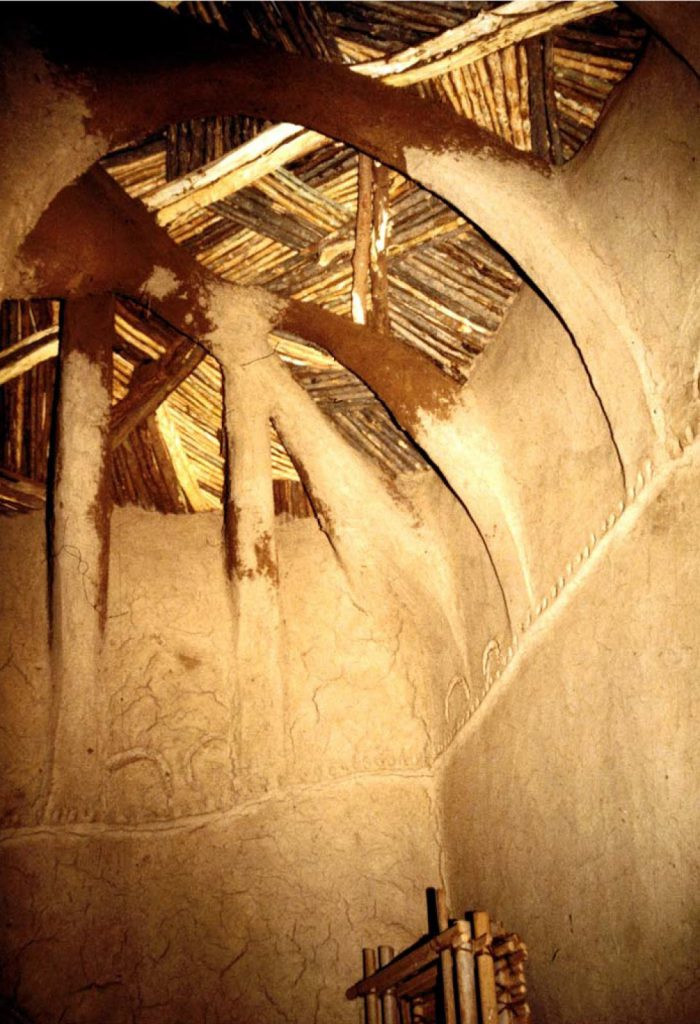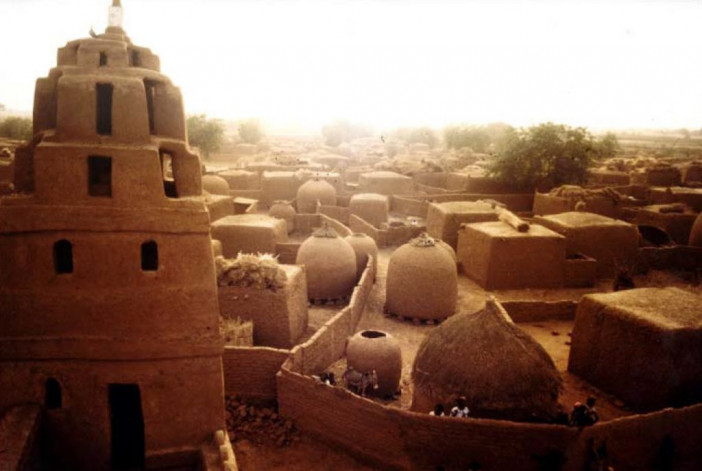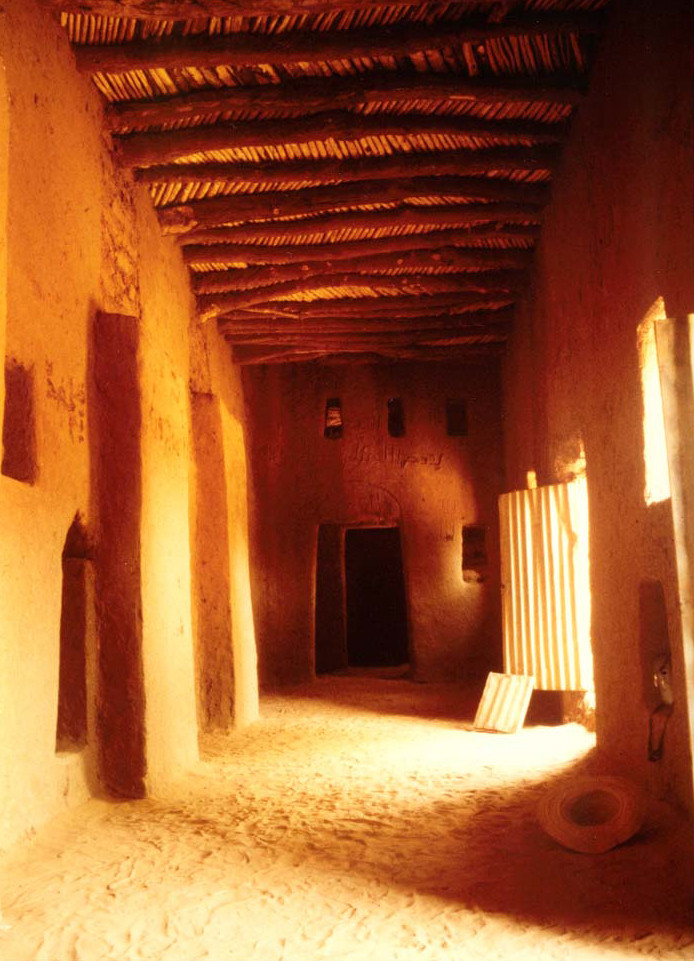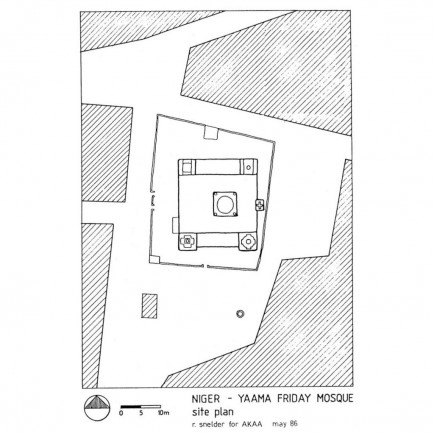Yaama Mosque
History
In 1962, the Yaama Mosque, a mosque in the Tahoua Region of Niger, was designed in the traditional Sudano-Sahelian architectural style.
The region is notably free of foreign influence even after more than 60 years of French colonization, which came to an end in 1960. As a result, the community decided to adopt conventional techniques to construct a Friday mosque where everyone could congregate for prayers. Mud bricks were used to build this edifice, and later additions included building a central dome encircled by four corner towers.
Urban and Architectural
The original design for this mud brick mosque Started in 1962, the Friday mosque was designed as a rectangular hypostyle prayer hall with a projecting mihrab serving as the only auxiliary volume. Four corner towers were constructed and a central dome was added during later restorations. Each tower is a unique sculpture, with bands tapering walls that get progressively more ornate as they get closer to the top. Half-circle crenellations adorn the parapets, and rounded cones indicate the corners. Mud brick buildings need periodic upkeep, modifications, and repairs.
Description
The village, however, made the decision in 1975 to renovate and expand the existing mosque by giving it a strong symbolic aspect. The construction of two galleries on its north and south sides and four towers with various shapes in each of the four corners are the most significant decisions. The mosque increased in size from 300 to 500 square meters. In addition, it was determined to enhance the spatial quality and attractiveness by replacing the wood beams in the central area with arches, half arches, and a dome.
References
https://en.wikipedia.org/wiki/Yamma_Mosque
https://www.archnet.org/sites/390
http://hiddenarchitecture.net/yamaa-mosque/
http://www.greatbuildings.com/architects/Falke_Barmou.html
Details
Location
Le Grand Mosquée De Yama Tahoua Niger, Yama, Niger
Worshippers
300
Owners
Falké Barmou
Architect Name
Year of Build
1962
Area
567
Drawings
Map
History
In 1962, the Yaama Mosque, a mosque in the Tahoua Region of Niger, was designed in the traditional Sudano-Sahelian architectural style.
The region is notably free of foreign influence even after more than 60 years of French colonization, which came to an end in 1960. As a result, the community decided to adopt conventional techniques to construct a Friday mosque where everyone could congregate for prayers. Mud bricks were used to build this edifice, and later additions included building a central dome encircled by four corner towers.
Urban and Architectural
The original design for this mud brick mosque Started in 1962, the Friday mosque was designed as a rectangular hypostyle prayer hall with a projecting mihrab serving as the only auxiliary volume. Four corner towers were constructed and a central dome was added during later restorations. Each tower is a unique sculpture, with bands tapering walls that get progressively more ornate as they get closer to the top. Half-circle crenellations adorn the parapets, and rounded cones indicate the corners. Mud brick buildings need periodic upkeep, modifications, and repairs.
Description
The village, however, made the decision in 1975 to renovate and expand the existing mosque by giving it a strong symbolic aspect. The construction of two galleries on its north and south sides and four towers with various shapes in each of the four corners are the most significant decisions. The mosque increased in size from 300 to 500 square meters. In addition, it was determined to enhance the spatial quality and attractiveness by replacing the wood beams in the central area with arches, half arches, and a dome.








